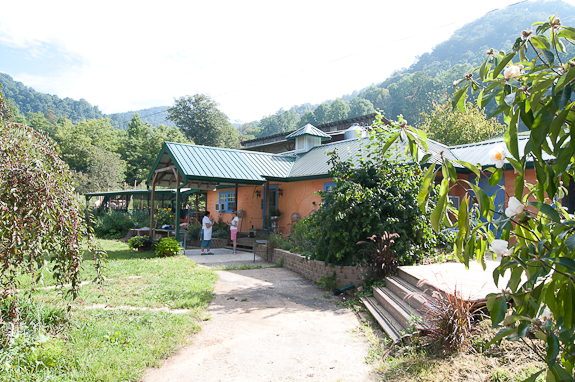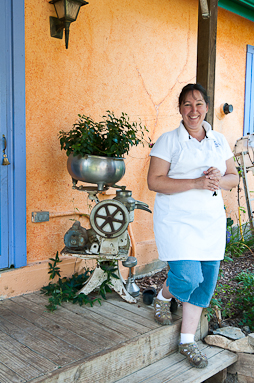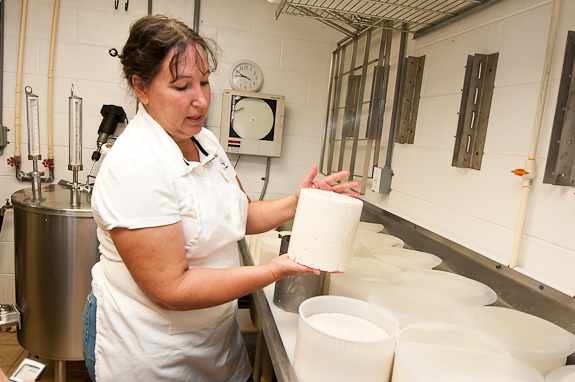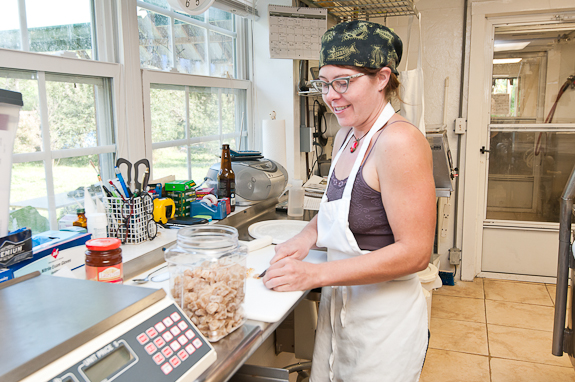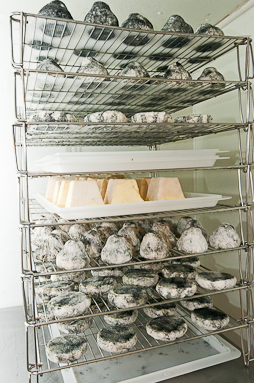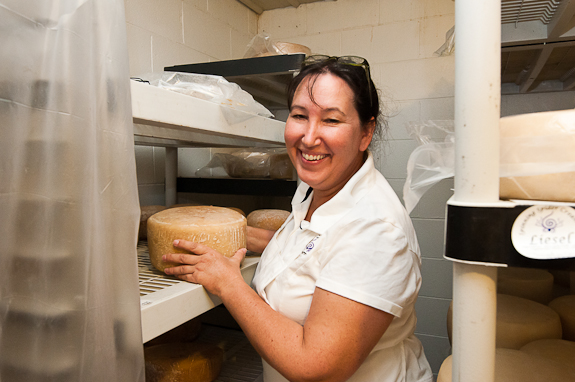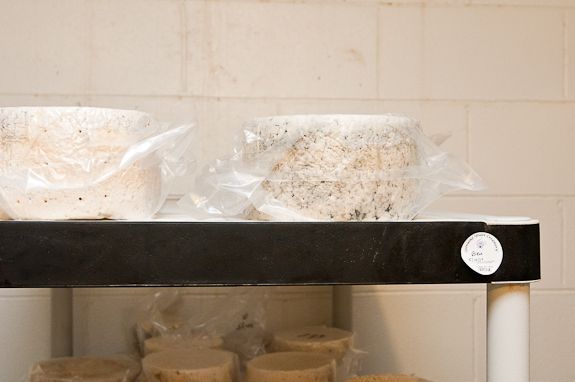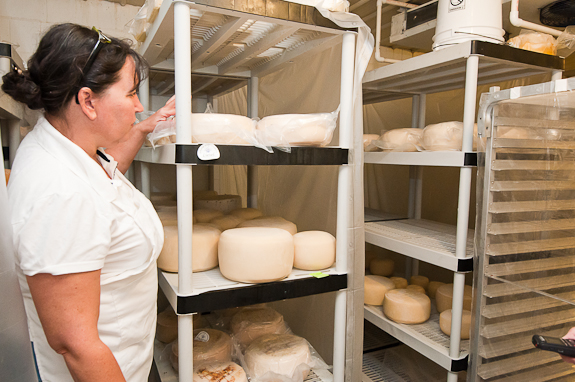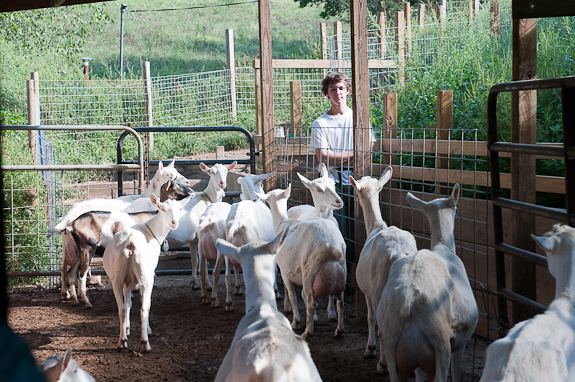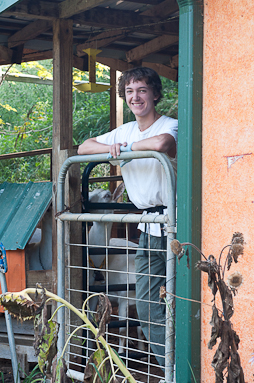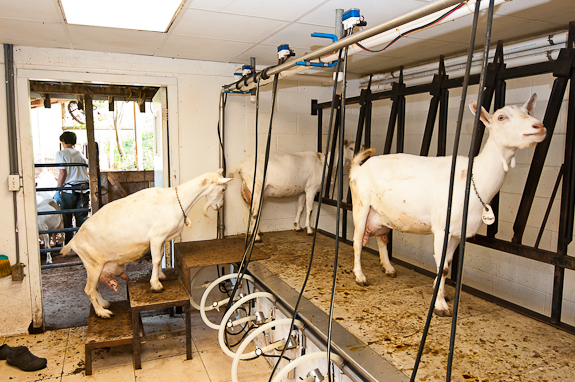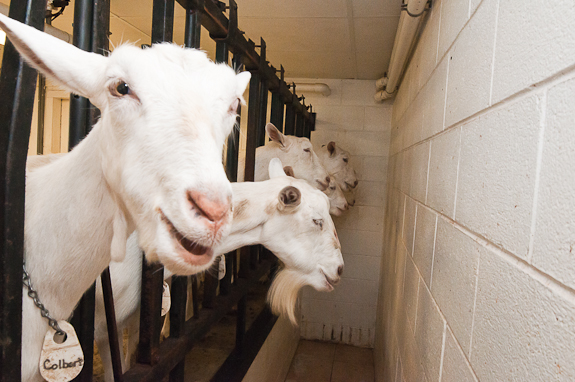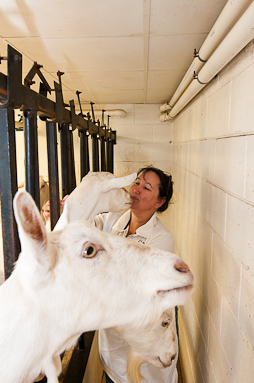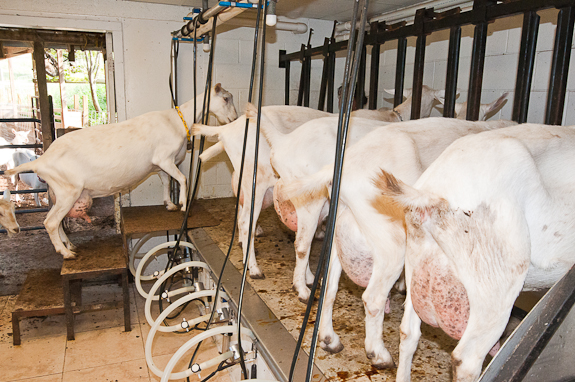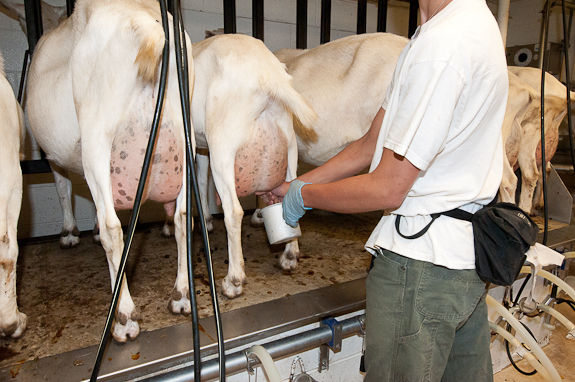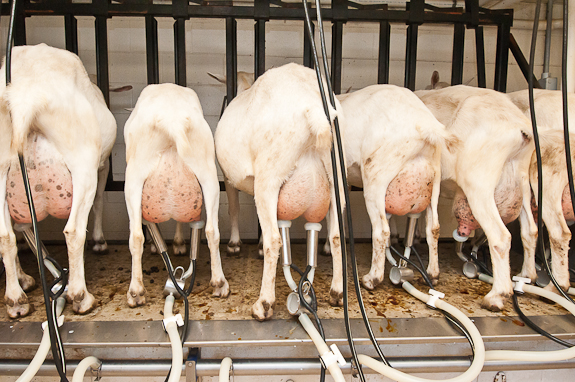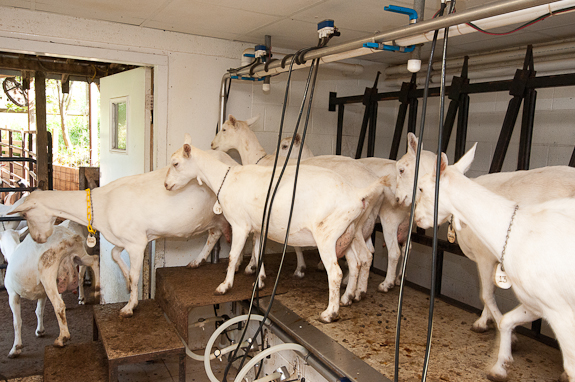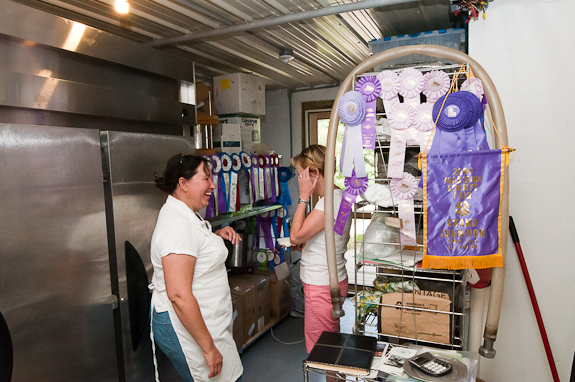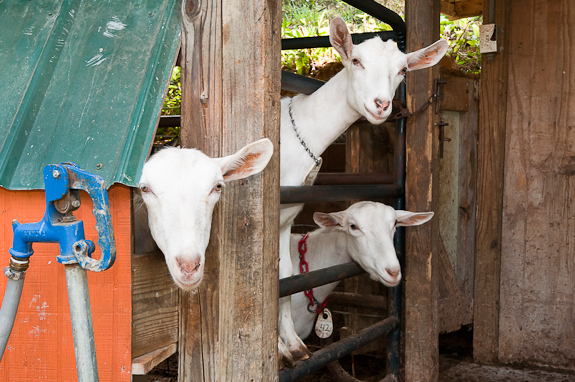Rosemary Goat Cheese Stuffed Figs with Prosciutto and A Trip to Spinning Spider Creamery
As many of you know, nothing is ever easy here at The Bunkycooks! After coming home to a flood in the front yard yesterday and paying a plumber $1000 (yes, that is the correct amount) to fix the broken pipe, I was finding it hard to see the humor in anything.
However, I have gotten over it (although the bank account hasn’t) and was finally able to write this next article in the On The Road with Bunkycooks series! This time we traveled to Spinning Spider Creamery in Madison County, North Carolina!
You might remember (if you have been reading Bunkycooks), that I first saw Spinning Spider Creamery cheeses at the Asheville City Farmers’ Market. So, when I wanted to prepare an appetizer made with goat cheese, I said NAAA to buying the cheese at Publix and decided we would pay this dairy farm a visit and go shopping there! You know that we always do things the hard way things with a twist, therefore, it was far better to get fresh goat cheese right from the source! So we hopped in the ginormous RV (more on that later) and off we went!
We met with Chris Owens, who with her husband Jeff, is the owner of Spinning Spider Creamery. This farm is situated on five acres nestled in a mountain cove on Bailey Mountain. You may be wondering (as I was), what on earth would cause you to start a goat farm (besides the fact that the goats are pretty darn cute).
I will tell you why! This began as a 4H project for the Owens family because their three children were allergic to cow’s milk. What started as a small family project with a few goats while homeschooling their children, has turned into a full-time family business with seventy-five goats! Chris said that she grew up on a farm and showed horses, so a farming lifestyle was not new to her. They moved to this farm in 1999 and became licensed as a business in 2003.
It is definitely a family operation. All of their children are involved and they are given an allowance for working on the farm. Chris says that it teaches them important skills, responsibility and accountability (I so agree). They also hope to be able to turn the business over to their children at some point in the future.
We were graciously hosted by Chris for our tour of Spinning Spider Creamery. We saw where the goat’s milk goes into vats and where the cheeses are produced, then dried, aged and refrigerated. Chris showed us the Black Mountain Blue Cheese that was just made the day before we arrived. It has to be flipped every 15 minutes for two hours the day it is made and then then every three to five hours over the first twenty-four hours. After that, it’s brined, then pierced by hand and flipped every day for at least sixty days. It’s a good thing that they have those young kids to stay up all night and flip that cheese for the first day!
We learned that that raw milk cheeses can legally be sold after sixty days, but that many of the cheeses require a much longer time to age. The cloth bound McChesney is their raw milk cheddar. The batch we saw will be ready in late December. By that time it will be about six months old. They like to sell the McChesney when it’s aged between six months and two years, even though it’s legal to sell when it’s sixty days old.
There were beautiful cheeses in the drying room. Some were hand molded, surface ripened French cheeses that were coated in ash made from the apple trees on their farm. These cheeses will develop a white mold that will completely cover it. We also wandered into the aging room to see the cheeses at various stages in the aging process.
Chris does sell her cheeses to various restaurants and Greenlife Grocery, however, she says she still prefers selling them at Farmers’ Markets (that is where we first found them!). She likes that people can sample the cheeses and see how ripe they are and what they taste like at the time.
One of the cheeses I would like to taste is their Liesel that is rubbed first with olive oil and then with a mixture of spice and chocolate. Oh, mercy! She did not have any of this in production, so I guess we will have to go back! They also produce young blues, Gouda, cheddar, feta and yogurt. We took home a delicious soft goat cheese flavored with cracked black pepper, rosemary and fig preserves.
Of course, the Bunkycooks were also lucky enough to watch the whole goat milking process. I have to admit that I have never milked a goat or cow nor have I seen this done before. It was like goats on parade! They methodically march in and go into a device that looks similar to a horse racing gate. However, there’s no running away here. These goats want to stay!
They are milked twice a day and enjoy the process (I would too if I had udders that were that big!), so they literally wait to be milked (no pushing and shoving, girls!). It really is very cute!
The goats are then carefully cleaned and prepared for the milking process to prevent any sort of contamination. The milk is fed through a line right into a vat in the next room where it is chilled. Chris says that 180 to 200 gallons of milk per day is the right amount for her to handle to make cheese in their small operation. She said that each of the goats, on average, will produce 17 pounds of milk per day (or approximately 2 gallons each).
She also told me that goat’s milk should not taste or smell “goaty” if it is handled properly and not exposed to air while being transferred. Milk is very sensitive to odors. The actual milking of the goats takes about 10 minutes (except for Colbert – the slow and stubborn one! She took longer. She’s just like that Colbert guy on television!).
I was impressed that Chris knows each and every one of her seventy-five goats by name! There’s even a Mary Poppins. The goats also enjoy a little attention before and after milking. They are truly happy and healthy goats!
There are usually between eight to ten male goats (bucks) in that total number of seventy five goats. They are only allowed to come around the females (does) when the appropriate time comes. The rest of the time they are kept separate. That’s some kind of odds, boys!
In addition to the incredibly busy day-in-day-out business of milking and cheese producing, Chris and her family also show their goats. (Can’t you just imagine bathing and drying a goat to show?)
Chris said that they have been very successful showing their goats and have placed quite well (look at those ribbons!). She said they are always working on making their goats stronger and healthier. They strive to have superior goats, therefore, they do show well and their cheese quality is superb.
Since they go to twenty-five to thirty fairs a year to show their goats (Chris said these are their vacations) and that their vacations consist of sleeping in barns at fairs with 3,000 goats…All I can say is…Oh my, this woman needs a real vacation!
This is definitely not just a business (as we saw first hand). This is truly a way of life. Their goats (at about 180 pounds each) are not going to wait to be milked! The lactation process slows down in August, but there are still cheeses to handle and seventy-five goats to take care of around the clock!
We really enjoyed visiting this farm. Chris and Silas were delightful and they are definitely all about goat! Thank you to Chris and the Owen family for sharing with us and showing us a little bit about a day in your lives on your dairy farm!
Since the cheese that Chris sent us home with was sooo good, I was inspired to create this appetizer! Here is a recipe for Rosemary Goat Cheese Stuffed Figs with Prosciutto. I used some of my favorite honey based products from Honey Ridge Farms in this recipe, but you can certainly substitute regular honey and balsamic vinegar in their place.
Enjoy!
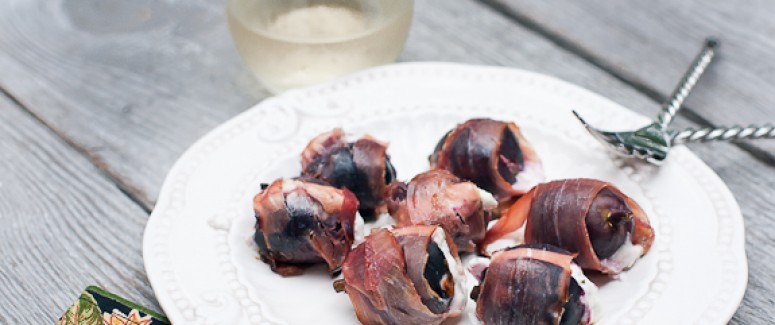
Rosemary Goat Cheese Stuffed Figs with Prosciutto
Serves 3-4
Ingredients:
12 fresh, Black Mission Figs
1/3 cup soft, fresh goat cheese (sold in tubs), at room temperature
1/4 teaspoon finely chopped fresh rosemary
Sea salt
Freshly cracked black pepper
6 thin slices Prosciutto, sliced lengthwise to make 12 thin pieces
Honey Ridge Farms Clover Honey Creme or regular honey
Honey Ridge Farms Balsamic Honey Vinegar or regular good, balsamic vinegar
Directions:
Preheat oven to 400 degrees. Spray a baking sheet with cooking spay and set aside. Wash and dry figs.
Mix together soft goat cheese, rosemary, a pinch of sea salt and a couple of turns of freshly ground black pepper. Slice to the figs on one side, being carefully not to cut through. Fill the space with a small amount of the goat cheese mixture. You could also use a small pastry tip to fill the figs.
Wrap each fig in the prosciutto and place on the prepared baking sheet. Put a small amount of the Clover Honey Creme on each fig (or drizzle with honey). Then top each with a little bit (about a teaspoon each) of Balsamic Honey Vinegar (or regular balsamic vinegar).
Bake six to eight minutes, until cheese is warm. Do not overcook as the cheese will ooze out of the figs.
Serve warm.

